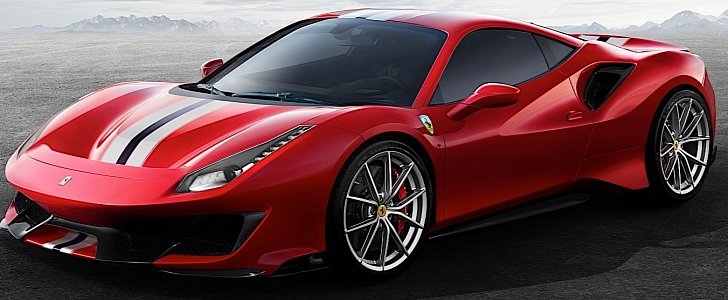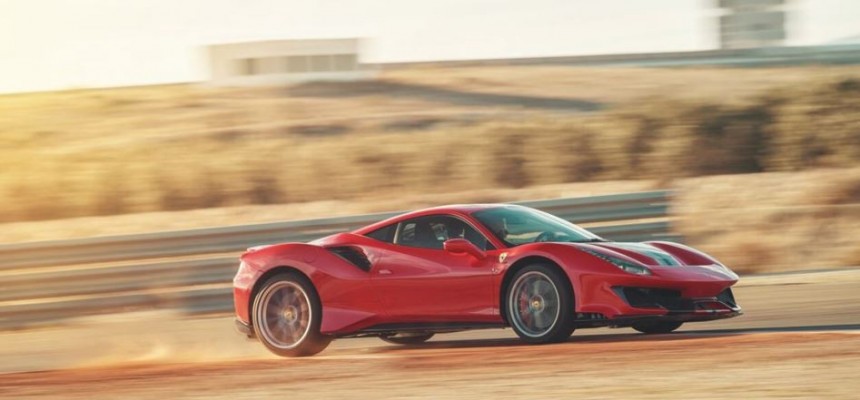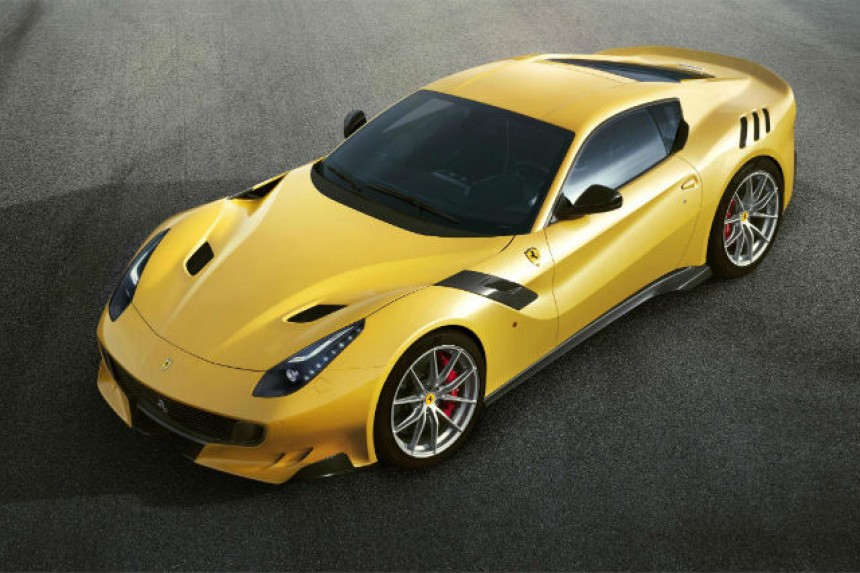“Ask a child to draw a car, and certainly he will draw it red,” Enzo Ferrari once said.
Red is believed to be the “traditional” color for Ferrari, but this is mostly due to coincidence. While it’s highly likely you think of a Ferrari when you think of a supercar, and you picture it red, this was never the intent behind the famous Italian luxury sportscar maker.
Ever since it was established as an automaker catering to the masses in 1947 in Maranello, Italy, Ferrari has been working to build an exclusive, luxury brand and, as such, every aspect of its business is conducted according to a very strict set of rules. One set concerns primarily color.
At the Maranello factory, customers who drop in for a visit can customize every bit of their new car, which would then take about 2 years to be built. Enzo believed that “there’s a Ferrari for every Ferrarista,” so he didn’t want to make two cars alike. The Maranello’s Tailor Made personalization program ensures that customers can have their input as regards their future car, and their wishes will be taken into due consideration.
Also here, they can suggest absolutely any color or color combination for the paintwork – as long as it’s not pink, which Ferrari has officially banned a while back. Ferrari doesn’t do Pokemon cars, just so we’re clear.
“It just doesn’t fit into our whole ethos, to be honest. It’s a brand rule. No pink. No Pokemon Ferraris!,” Ferrari’s Australasia CEO Herbert Appleroth said in a 2017 interview. “There are other colors that aren’t in our DNA as well and they are wonderful colors too but some are perhaps more suited to other brands.”
“Every Ferrari is customized, personalized or bespoke,” Appleroth continued. "There are many different levels of personalisation from sitting in the dealership and working through all of your options to the tailor-made progam where you fly to Italy to the factory in Maranello and sit in the atelier and work out your specifications. Like anything in fashion, we push the boundaries and our personalization programs allow for our clients to basically create a couture car.”
This sounds like Ferrari is extremely flexible with the client, and it sure is. But only with the VIP clients, the same ones who get on exclusive lists for limited releases and who don’t have to go through the lengthy approval process before driving home in a Prancing Horse.
For the rest of the world with pocketloads of money, Ferrari cars come in a limited range of color options. As Appleroth says, over at the Maranello factory, they’re building “couture” cars, so of course they’re more likely to be flexible since the amounts of money exchanging hands are huge. With regular customers, though, the flexibility is almost non-existent.
That said, contrary to popular opinion, Ferraris don’t come just in red and the occasional black, yellow and gray. It’s true, red is the most popular color, accounting for 85 percent of the Ferraris sold in the ‘90s and 40 percent for those sold today.
Ferrari is associated with red because, back in the day when it was only into racing, cars were painted based on the country they represented: Italy got red, Germany white, France Blue, and the UK green. Italy had red racing cars long before Ferrari, as a matter of fact. And the "official" Ferrari color is the yellow in the background of the Prancing Horse symbol, which is also the color of the town of Modena, where it all started.
Rosso Corsa is today’s most popular shade of red, though it’s not the same shade as that used in the early ‘40s for racing cars. And there are countless of reds available, for the discerning eye: there’s Rosso Scuderia, Rosso Mugello, Rosso Dino, Rosso Fiorano, Rosso Monza, Rosso Fuoco, Rosso Berlinetta, Rosso 70 Anni (created in 2017, for the 70th brand anniversary), Rosso Portofino (metallic), and countless others. Some models, like the 288 GTO, have only ever been made available in red.
The color range available to today’s (average, if there’s such a thing) Ferrarista is limited: there’s yellow (Giallo), black (Nero), blue (Azzurro), green (Verde), Silver (Argento), Brown (Marrone), each with a small variation of shades. In fact, the only color that offers a wider range of shades is red, hence we can talk about Rosso Ferrari and not feel like we’re doing the brand a disservice through overgeneralization.
As Nicola Boari, Head of Product Marketing, once said: “Rosso Corsa is rooted in our DNA. We really believe it interprets the best link with the brand – it’s our most representative color.”
While the association between red and Ferrari did not come as an in-house decision at first, it was strengthened through the years on purpose. Because when it comes to branding, no other automaker is as strict and controlling as the Prancing Horse. If Ferrari wants you to think of its cars as red, it will do – and has done – everything in its power for it to happen.
Ever since it was established as an automaker catering to the masses in 1947 in Maranello, Italy, Ferrari has been working to build an exclusive, luxury brand and, as such, every aspect of its business is conducted according to a very strict set of rules. One set concerns primarily color.
At the Maranello factory, customers who drop in for a visit can customize every bit of their new car, which would then take about 2 years to be built. Enzo believed that “there’s a Ferrari for every Ferrarista,” so he didn’t want to make two cars alike. The Maranello’s Tailor Made personalization program ensures that customers can have their input as regards their future car, and their wishes will be taken into due consideration.
Also here, they can suggest absolutely any color or color combination for the paintwork – as long as it’s not pink, which Ferrari has officially banned a while back. Ferrari doesn’t do Pokemon cars, just so we’re clear.
“Every Ferrari is customized, personalized or bespoke,” Appleroth continued. "There are many different levels of personalisation from sitting in the dealership and working through all of your options to the tailor-made progam where you fly to Italy to the factory in Maranello and sit in the atelier and work out your specifications. Like anything in fashion, we push the boundaries and our personalization programs allow for our clients to basically create a couture car.”
This sounds like Ferrari is extremely flexible with the client, and it sure is. But only with the VIP clients, the same ones who get on exclusive lists for limited releases and who don’t have to go through the lengthy approval process before driving home in a Prancing Horse.
For the rest of the world with pocketloads of money, Ferrari cars come in a limited range of color options. As Appleroth says, over at the Maranello factory, they’re building “couture” cars, so of course they’re more likely to be flexible since the amounts of money exchanging hands are huge. With regular customers, though, the flexibility is almost non-existent.
That said, contrary to popular opinion, Ferraris don’t come just in red and the occasional black, yellow and gray. It’s true, red is the most popular color, accounting for 85 percent of the Ferraris sold in the ‘90s and 40 percent for those sold today.
Ferrari is associated with red because, back in the day when it was only into racing, cars were painted based on the country they represented: Italy got red, Germany white, France Blue, and the UK green. Italy had red racing cars long before Ferrari, as a matter of fact. And the "official" Ferrari color is the yellow in the background of the Prancing Horse symbol, which is also the color of the town of Modena, where it all started.
Rosso Corsa is today’s most popular shade of red, though it’s not the same shade as that used in the early ‘40s for racing cars. And there are countless of reds available, for the discerning eye: there’s Rosso Scuderia, Rosso Mugello, Rosso Dino, Rosso Fiorano, Rosso Monza, Rosso Fuoco, Rosso Berlinetta, Rosso 70 Anni (created in 2017, for the 70th brand anniversary), Rosso Portofino (metallic), and countless others. Some models, like the 288 GTO, have only ever been made available in red.
As Nicola Boari, Head of Product Marketing, once said: “Rosso Corsa is rooted in our DNA. We really believe it interprets the best link with the brand – it’s our most representative color.”
While the association between red and Ferrari did not come as an in-house decision at first, it was strengthened through the years on purpose. Because when it comes to branding, no other automaker is as strict and controlling as the Prancing Horse. If Ferrari wants you to think of its cars as red, it will do – and has done – everything in its power for it to happen.










